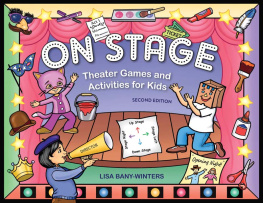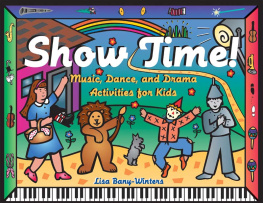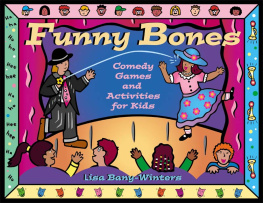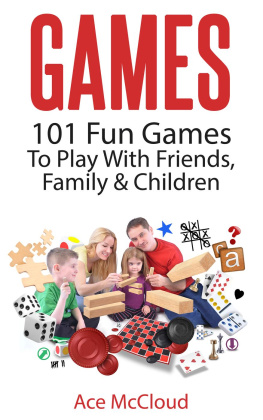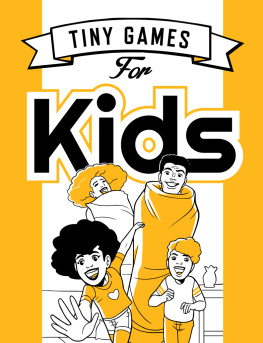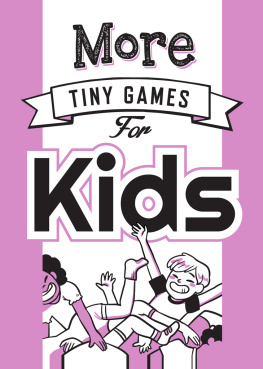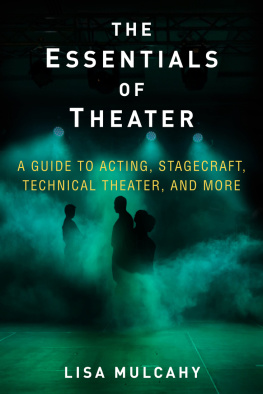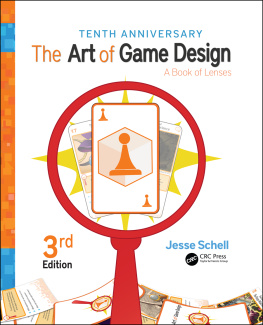
Copyright 1997, 2012 by Lisa Bany-Winters
All rights reserved
Second edition
Published by Chicago Review Press, Incorporated
814 North Franklin Street
Chicago, Illinois 60610
ISBN 978-1-61374-073-6
Cover and interior design: Sarah Olson
Cover and interior illustrations: Jim Spence
Library of Congress Cataloging-in-Publication Data
Bany-Winters, Lisa.
On stage : theater games and activities for kids / Lisa Bany-Winters. 2nd ed.
p. cm.
Includes bibliographical references.
ISBN 978-1-61374-073-6 (pbk.)
1. Drama in education. 2. Play. 3. Childrens plays, American. I. Title.
PN3171.B27 2012
372.66044dc23
2012012741
Printed in the United States of America
5 4 3 2 1

To Michaela and Carlin with love
Contents

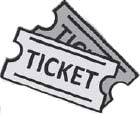
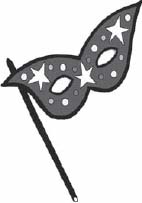

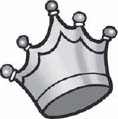
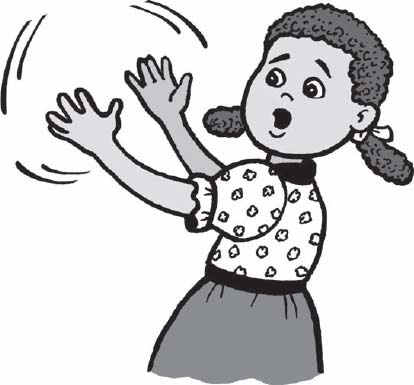

Introduction
A cting and theater games help people of all ages focus and concentrate their energies and improve their writing and communication skills, which are useful tools in every aspect of life. On Stage is a book designed to help children learn by doing. They can expand their imaginations, free the way they think, talk, and move. Theyll learn how to express themselves with their voices and their bodies.
Theater skills enhance childrens self esteem, make it easier to step into new situations, help them problem-solve, strengthen listening skills, encourage cooperation, make interaction with others more comfortable, and manage public speaking fears. Although this book is recommended for children between the ages of six and twelve, children as young as four or five can understand the basic acting concepts in these pages. And anyone who is young at heart will have fun with these theater games and improvisation activities.
The serious performer, director, and drama teacher will find that all acting techniques can be taught through games, which can foster a variety of performance, storytelling, and character-development skills. Games at the beginning of a class or rehearsal strengthen work with a script by helping actors warm up, focus their energy, develop their characters, work with each other, and even memorize their lines.
Most of these games require few props and little or no advance preparation. Many games can be changed for more fun. Some ideas are listed following many of the activities. These sections are called Play It Again, Sam! The of this book, Getting Onstage, includes fun ways to teach some very important theater terms and basic theater concepts, such as blocking and stage pictures. These terms will be of special interest to teachers or directors working with young children. The exercises in this chapter are excellent for early rehearsals or drama classes because they give performers the foundation for communicating throughout rehearsals and classes.
The Twisting Your Tongue and Warming Up, includes games that are great to do at the beginning of class or rehearsal or before a show to help young people prepare physically and vocally for performing.
The Anytime Theater Games, is filled with games that are great for enhancing listening skills and fostering cooperation. Some of these games can also serve as ice breakers for students who are shy.
The Theater in the Round (Games Played in a Circle), offers games that work well with groups. They can be played standing or sitting in a circle. They make good party games or can be used as actor warm-ups. These games help strengthen improvisation, memorization, and focusing skills as well as promote team building.
, Make Em Laugh (Ideas for Funny Scenes), will give children a chance to develop their comedic skills. Creative writing teachers might find these activities useful because they help participants develop story lines and flesh out characters.
The , Creating Characters, will help children further flesh out their characters by letting them explore how a character walks, talks, thinks, eats, and everything else that makes a character unique.
Improvisation is the title and focus of the . Heres where young actors can develop their thinking and doing skills in an environment where anything can happen. Because there are no props or scenery, you can create anything simply by saying it.
is precisely titled Using and Becoming Objects because students are given the opportunity to become inanimate objects, like a chair, a hat, or a rug. They can also find new, creative uses for familiar objects.
Creative Drama, the shows how to use pantomime, puppets, or masks to tell a story onstage.
In the called Behind the Scenes, young actors will learn what goes on behind the scenes and offstage at every theatrical production. Readers will be introduced to the people who help make the magic onstage, including the sound-effects technician, costume designer, makeup artist, and prop master.
The final chapter, Monologues, Scenes, and Plays, provides a few examples of childrens performance pieces that are ready to be used.
You can teach these chapters in order or in any order you want. The point is to make as much fun as you can in whatever time you have available. And remember, the magic of theater can happen on a stage, in a yard, or in a classroom. All you need is your imagination and the desire to have fun.
Getting Onstage
T his chapter is about basic theater words, and it also has games to help you learn them. The words in quotation marks in this chapter, such as blocking and cross, are used by professional actors and actresses in plays on Broadway, in your hometown theaters, and around the world. These words help the cast and crew talk to each other about their jobs. You can use them when you put on plays at school, in your home, or anywhere else.
You can practice your theater knowledge with the games in this chapter. Blocking and Upstage Downstage are games that explain the basics of movement onstage (which means the part of the stage that is visible to an audience, as opposed to offstage, which is the part of a stage that is not visible and lies behind the scenes). Stage Picture reminds you to never turn your back to the audience. The Directing Game puts you in the directors chair, and Whos Who in Theater explains everybodys important role in creating and performing a play.
Actors are called thespians. This word comes from Thespis, a sixth century BCE Greek poet who is credited with being the founder of tragic drama and the first actor.
Next page
